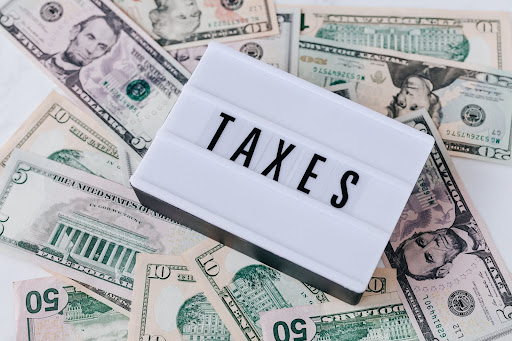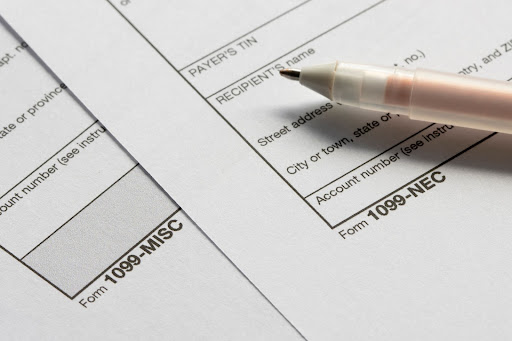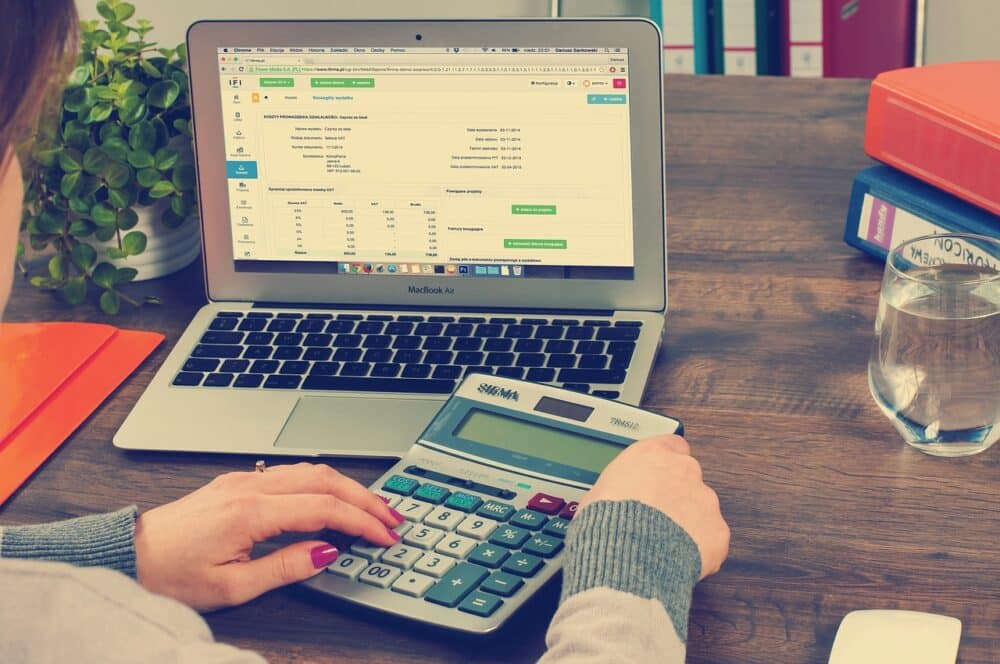
Step-by-Step Guide to Filing Taxes When You’re Self-employed (Bonus: Six 1099 Deductions for Freelancers)

It’s okay to admit that you dread tax season. Filing self-employment taxes is not fun. Unless you’ve been diligently organizing and keeping records all year, doing your taxes can be a headache.
As a self-employed person, using a tax management tool can help you keep everything in order, but there isn’t a quick solution for the actual filing steps.
If you want to maximize your deductions, you’ll need to find your receipts, know how to itemize, and stay on top of the newest laws.
As a self-employed individual, the process looks a lot different than it did when you were working for someone else.
Never fear, though — we can help you understand the steps of filing your self-employment taxes.
Luckily, it doesn’t have to be scary. We have you covered all things tax-related in this guide.
We’ll take you through each step of filing your self-employment taxes. As a bonus, we’ll point you toward some 1099 deductions designed for freelancers.
1. Check Your Employment Status
Do you know what your IRS-defined employment status is, or are you assuming you fall into the “self-employment” category?
With all the distinctions that make up the various headings, it may surprise you where your business lands.
Before you do anything else, first, make sure the Internal Revenue Service (IRS) considers you self-employed. Otherwise, you could be stressing the ‘self-employment’ tax process for nothing.
Breaking Down the Self-Employed Categories
Self-employment sounds pretty obvious, right?
You either work for yourself and pay your taxes or work for someone else who pays them on your behalf.
But in the world of government legalese, it’s not always that cut-and-dried.
Check out the nuances that make up each of these tax-filing status headings to see which one you qualify for.
The Different Tax Labels of Self-Employment
Business owners and independent contractors will usually fall in the “self-employed” category. This refers to anyone who provides a service to other businesses.
You could be a freelancer, a gig-worker, or the sole owner of a small- or medium-sized business.
However, if you hire or contract other people to work for your company, there are more responsibilities on your shoulders.
Are they employees? Subcontractors? Their designation determines how you can write off the payments you give them.
Also:
How you register your business with the IRS makes a difference as to what forms you fill out and what kinds of deductions you’re able to claim.
You’ll know if you already have a sole proprietorship or a Limited Liability Company (LLC) because you have to fill out forms to register your business as such.
But if you haven’t filed yet, choosing a structure that matches your business goals is essential.
Sole Proprietor, LLC, or Independent Contractor?
So what exactly does each category mean? Let’s break them down to the very basics here.
Sole proprietors own an unincorporated business on their own. This means you don’t have a partner and don’t plan to get one any time soon.
A sole member can own an LLC. However, it gives you the option to incorporate as a partnership down the road.
Independent contractors fall outside of both of these categories. People who are in a trade, profession, or business where their services are available for hire to the general public may be independent contractors.
The difference between a contractor and an employee is the defining point.
An independent contractor controls every aspect of their job, as long as they meet the client’s expectations for the finished product. An employee works in a set and structured environment with scheduled times and an agreed-upon salary.
All three of these headings fall into the independent contractor category. However, you don’t have to pay taxes on any payments under $400 from a single employer.
So, if you have a one-time job with a client and you earn $399 or less, you aren’t required to report it on your tax return. And if your entire small business year is full of these kinds of jobs, you don’t have to pay income tax on any of them.
2. Collect Your 1099s

As a traditional full-time employee, you would receive one Form W-2 from your employer that covered the whole year. As an independent contractor or freelancer, you might end up with dozens of 1099s — one from each client.
1099 is the form your clients use to record and report their payments to you to the IRS. If you receive one of these, it’s the form that the payer is claiming as documentation that they paid you money.
Freelancers, gig workers, and independent contractors are often referred to as “1099 employees.” The IRS uses 1099s as evidence that your social security or employer identification number to verify income— and that you should be paying taxes on it.
There are different kinds of 1099 tax forms. It’s important to know which type you have because the nuances in each one determine which write-offs you qualify for.
The Most Common 1099s
The tax payments on your business income come directly from the 1099s you receive.
Depending on your work and personal life, you may see these types of forms in your mailbox:
- 1099-NEC forms are the typical freelancer forms. Anyone who pays money to someone who was not their employee but worked for them fills out a 1099-NEC. They should send you a copy of this form early in the new tax year.
- 1099-A forms show debt canceled by a mortgage lender or income after you sold your home in a short sale. Canceled debt is taxable, even if your lender forgot to tell you that part.
- 1099-B forms report the income you receive from selling securities or selling items online through a bartering system.
- 1099-C forms are similar to a 1099-A, except they’re used by other lenders, such as credit card companies.
- 1099-MISC forms include prize money, gambling winnings, and anything else that doesn’t fit into a specific 1099 category.
If you received money through another system that isn’t included here, you’re not off the hook yet. Various other 1099 forms run the gamut, from payment for dividends to college tuition savings.
Make sure you have all of these in front of you when you file self-employment taxes.
Subscribe To SelfGood
Get up to date perks and Gigworker news. Easy. Simply. SelfGood. Subscribe.
3. Grab Your Paperwork
When you work for yourself, anything associated with your business is a potential tax deduction.
To get the most out of your income tax return, always keep any piece of documentation that supports your expenses.
Now, collecting the information is one thing, but finding it when it comes time to file your business taxes is another story.
Part of being self-employed is getting yourself organized, especially your tax documents. The better prepared you are, the more accurately you’ll be able to judge your estimated tax payments.
As you collect your receipts, have a system in place to file them for easy retrieval later on.
For an extra orderly system, separate them into categories:
- Canceled checks
- Proof of purchases
- Paid expenses
- Business-related meals
- Travel
- Gifts
- Etc.
Some small business owners and freelancers find it easier to break their system down by tax quarter and pay quarterly taxes. If you decide to organize your planning this way, your quarterly payments will be more manageable.
Regardless of how often you choose to file your taxes, your system should include a running total so you’re not shocked later.
Learn your self-employment tax rate (it changes from year to year) and the Social Security tax you’re expected to cover. Then, set up a spreadsheet to include your income and how much of it is taxable.
The Form 1040-ES is helpful here, too, because it lets you fill out your gross income data and see an estimated tax payment before deductions.
Tax preparation may never be fun, but with a well-organized system, it will be less of a headache.
4. File Your Taxes
Before you file your taxes, learn whether you need to file a state tax form or only file as a federal taxpayer. Check out your state’s filing requirements to verify your legal responsibilities.
If you’re not certain how you should be filing, definitely check with a tax professional.
Then, using the software you prefer, it’s time to start filling in the blanks.
Tax Software for Self-Employed Individuals
Once you cross the federal tax line and become a small business or freelancer, you can’t use any old e-file software.
Programs designed specifically for self-employed people can help you maximize your deductions and ensure you fill out the correct forms (saving you hours on duplicate or missed paperwork).
Look for software that includes a Schedule SE form to simplify paying your Social Security and Medicare tax.
Also, if you get your income from several different clients, make sure your software gives you enough forms for you to plug in all of the 1099s you receive.
TurboTax and H&R Block are two programs that frequently come out on top as the best software for self-employed tax filers. However, you can use any software that works for your business needs.
5. Bonus: Deductions for 1099 Freelancers

As a freelancer, you can claim a few extra deductions that could help limit your tax liability.
If you didn’t have a business last year, you might have gotten a tax refund from the additional Medicare tax and extras taken out for your dependents.
But as a self-employed worker, you’re going to need all the deductions you can get to keep from having to pay a hefty chunk.
Can You Claim These Deductions?
Business expenses are anything you have to pay to do your job.
The overhead takes away from your net profit, but you can recoup some of this by claiming expenses as business deductions on your taxes.
As a freelancer, you might benefit from these bonus deductions:
Home Office
If you have a home office and you run part or all of your business from there, you can deduct a percentage of your rent or mortgage payment.
Office Supplies
Your office supplies are tax-deductible. Save the receipts for pens, paper, ink, and other materials.
Work Technology
You can add computers and software to the list of deductions. Yes, this includes your phone and tablet (and possibly your streaming apps if you can show that you use them for work-related purposes).
Healthcare Costs
Keep copies of your medical, dental, and vision health insurance premiums, and deduct those, as well as your disability, liability, and malpractice coverage.
Work-Related Travel and Meals
Did you travel for a job or take a client out for a meal? Any travel expenses or work-related meals are on the “claim” list.
Advertising
Advertising and marketing expenses, such as business cards, websites, and donations are tax-deductible. If it has your business name on it and you used it for promotions, include it in your deductions.
Still not sure about how to file your taxes to optimize your deductions?
Help is available!
Check out Selfgood, an all-in-one service designed for gig workers.
With your Alliance of Gig Workers membership, you get the benefit of financial advising services. Our financial team will help you find ways to lower your tax liability so you can keep more of your hard-earned money.
Conclusion
When you’re self-employed, filing your taxes is a whole different ball game than when you were an employee.
But paying taxes on your self-employment income doesn’t have to be a mystery.
Follow these steps to make the process easier, and if you still need help, contact an expert (like those at Selfgood) for guidance.





